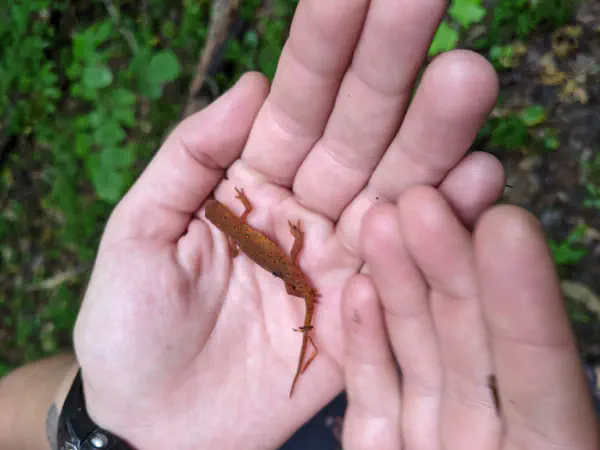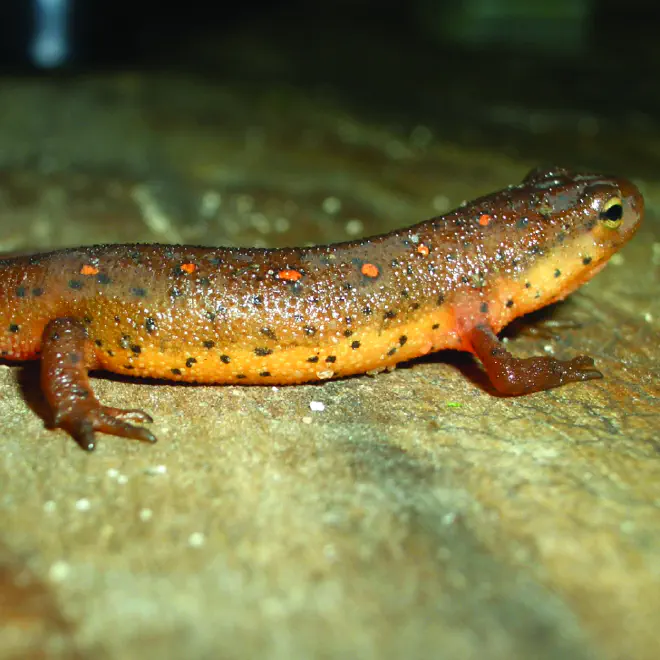Notophthalmus viridescens
Table of Contents

Scientific Classification
| Kingdom: Animalia |
| Phylum: Chordata |
| Class: Amphibia |
| Order: Urodela |
| Family: Salamandridae |
| Genus: Notophthalmus |
| Species: Notophthalmus viridescens |
Conservation Status
Identifying Features
Eastern newts are around 3-5 inches in length and can vary in color depending on the life stage. Speckled with 10-12 black-ringed red spots on their backs, they are vibrant orange in the eft stage and a darker red-brown or olive color as adults. As they grow older, they form keeled aquatic tails and have lighter, yellow bellies with black spots.
Habitat & Range
Eastern newts can be found in woods, streams, and ponds throughout eastern North America. As adults and larvae, they are aquatic and can be frequently be found in wet areas. As efts, they are terrestrial and can be found living in nearby forests and leaf litters.
Behavior
Eastern newts are ectothermic and rely on outside sources of heat to maintain their body temperature. During colder months, they will spend their time burrowed underground or seeking shelter in logs. They will become active once again when the weather warms up.
Life Cycle
Eastern newts mate once a year, but both females and males may choose several partners to mate with. From late fall until early spring, males will actively court females through a set of rituals until chosen. Female newts will lay their eggs in the water and can lay up to hundreds of eggs during a single batch.

Featured image by Katie Bagnall-Newman

